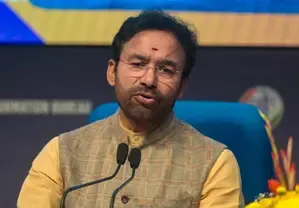Has India's Coal Sector Transformed with a 70% Production Surge in 11 Years?

Synopsis
Key Takeaways
- India's coal sector production has surged by 70% over the last decade.
- Over 1 billion tons of coal production is projected for 2024-2025.
- Approximately 150 Coal Mines auctioned successfully since 2020.
- Government initiatives focus on sustainability and environmental responsibility.
- State governments have received Rs 2.50 lakh crore in revenues.
New Delhi, May 26 (NationPress) Once regarded as a corruption-ridden, oversized, and inefficient entity, India’s coal and mining industry has experienced a remarkable transformation over the past decade, achieving a 70% increase in production, surpassing 1 billion tons for the fiscal year 2024-2025, as noted by Union Minister of Coal and Mines, G Kishan Reddy, in an article celebrating the Modi government's 11 years in power on May 26.
This shift was seen as one of the most significant challenges for the newly elected Narendra Modi administration. The Supreme Court's annulment of 204 coal blocks in 2015 opened the door for the government to pursue transformative changes. The launch of commercial coal mining in 2020 marked a new phase of transparency and competition, as stated in the article.
Reddy points out that, as of March 2025, roughly 150 Coal Mines have been successfully auctioned. Since the initiation of Commercial Coal Mining in June 2020 by the Prime Minister, 11 rounds have been completed, with the 12th round of commercial coal mine auctions currently underway, having begun in March 2025.
The outcomes are evident: India's coal production has surged by 70% over the past decade, reflecting significant advancements in transparency, efficiency, and sustainability. State governments have notably benefited, receiving approximately Rs 2.50 lakh crore in auction premiums and royalties into their exchequers, as Reddy highlighted.
This achievement is not a sudden change but the result of a decade of comprehensive reforms. Back in 2014, the coal sector was in utter chaos, facing a significant shortfall in production relative to its dramatically increasing demand. Coal and lignite production saw a slight rise from 566 million tonnes in 2009–2010 to 610 million tonnes in 2013–2014, leading to a cumulative annual growth rate of only 1.89%, which was grossly inadequate for a growing economy, Reddy noted.
Looking ahead, with a persistent focus on modernization, international partnerships, and sustainable practices, the path forward is set to witness even more impressive milestones, reinforcing India’s position as a leader in the global mining and resource sector.
Reddy emphasized the government's increased focus on addressing environmental and sustainability issues within the coal sector.
By acknowledging the environmental benefits of underground mining, such as reduced land disturbance, lower emissions, and extraction at deeper levels, our government is committed to enhancing this approach. An ambitious roadmap aims to achieve 100 MT by 2029–30, which is already being put into action.
Additionally, the Ministry is expediting First Mile Connectivity (FMC) projects, ensuring that 90% of coal will be loaded via mechanized and environmentally friendly systems, including conveyor belts, silos, rapid loading systems, and water sprinklers, Reddy added.









